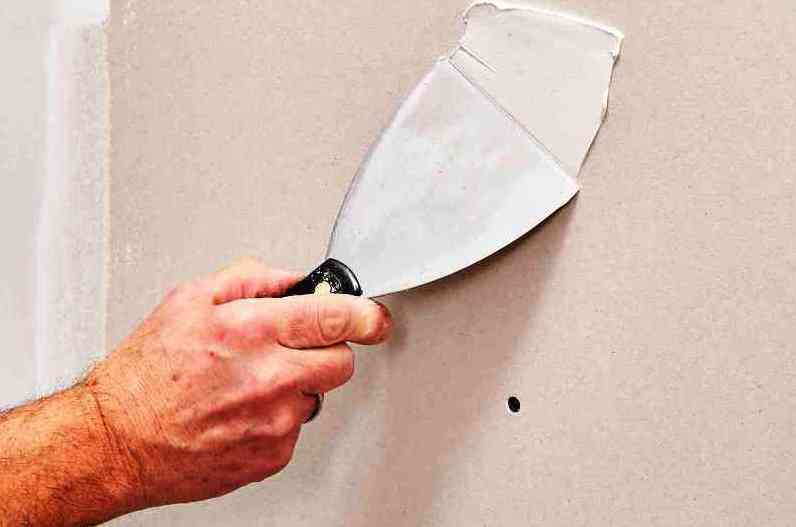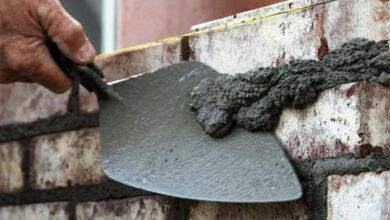Install Drywall Tape with Hot Mud

To finish corners and joints in any drywall installation project, you’ll need joint compound or mud. Cracks and holes can also be filled with drywall mud.
Different kinds of drywall mud exist. But today, the quick-setting compound—also referred to as hot mud—will be the main topic of discussion.
The reason it’s called hot mud is that mixing it triggers a chemical reaction that warms the mixture. In addition to setting fairly quickly, this kind of mud is a great option if you want faster drying times.
Tape is needed to bind together drywall pieces when applying hot mud. Additionally, the tape reduces joint motion and stops cracking.
We’ll walk you through the entire process of taping with hot mud in the guide below, along with anything else you might need to know.
Which Kind of Tape Works With Hot Mud?
The best kind of tape that works with a quick-setting joint compound should be discussed before we go too far into how to tape drywall with hot mud.
If you are familiar with installing drywall, you are aware that tape comes in various varieties. Paper tape and mesh tape are the two most widely used alternatives.
Hot mud works better with mesh tape. Unlike paper tape, this kind of tape doesn’t require a bed coat.
Additionally, because it is self-adhesive, you can apply it straight to drywall joints. Thus, strictly adhere to mesh tape if you have chosen to install drywall using hot mud.
How Should Hot Mud Be Taped?
Using hot mud for taping is a quick and simple process. This is as a result of the special qualities of hot mud and mesh tape. This is how hot mud and tape are applied to drywall seams.
- Step 1: First, cut and put on the mesh tape.
Use mesh tape to cut and apply it directly over the drywall seams, eliminating the need for a bed coat.Because mesh tape is self-adhesive, it can adhere to nearby drywall pieces.
Make sure the mesh tape covers the seam on both sides when applying it. This will ensure that the bond is much stronger.
- Step 2: Put on the First Hot Mud Coat
Using a wide knife, prepare a small batch of hot mud and apply it. Because the mud sets quickly, you must mix small amounts of hot mud to prevent waste.
Make careful to press the hot mud deeper into the seam and tape as you apply the first coat. This will stop bubbles from forming. In order to make the transition seem uniform and smooth, smooth it out.
- Step 3: Prior to applying the second coat, wait an hour or two.
Hot mud sets quickly, so applying a second coat doesn’t need to wait all night. After one or two hours, apply your second layer of joint compound. That’s all there is to it. Your drywall joints will be finished correctly in a reasonable amount of time.
- Step 4: Immediately clean your tools
It can be very hard to clean your tools after hot mud dries on them. Thus, as soon as you have finished mudding and taping, clean the tools.
Is It Hard For Novices To Tape With Hot Mud?
Professional drywallers use hot mud because of its quick setting time. Despite being a benefit, this could be a disadvantage for beginners.
When taping with hot mud, most do-it-yourself drywallers would rather take their time. Therefore, using a quick-setting compound can be a little difficult for these people.
When taping with hot mud, a pro tip is to always work in smaller areas and mix small amounts of joint compound. By doing this, you can make sure that you have enough time to apply the hot mud.
Does Taping With Hot Mud Require Protecting The Floor?
Hot mud stains can be hard to remove, unlike regular drywall mud, whose splatters can be easily cleaned off the floor.
Consequently, it’s a good idea to have a canvas or rag on the floor at all times to avoid stains. Take care of the floor when you get ready to tape using hot mud.
How much hot mud can be applied on top of mesh tape?
It takes just two or three coats of hot mud to achieve a seamless transition between drywall joints. The tape that goes on first provides a surface on which the mud can stick.
Consequently, you should be able to properly seal any drywall seams and obtain a consistent finish with two or three coats. Make sure you allow enough time for each coat of hot mud to cure. Another way to get rid of bubbles is to feather out the coats.
What Advantages Do Hot Mud Tape Offer?
When it comes to taping with hot mud, there are differing views among do-it-yourself enthusiasts. There are those who approve of this approach and those who do not. Why then would you think about taping with heated mud? Here are a few advantages that are noteworthy.
- It’s the ideal way to finish drywall joints fast – Hot mud sets quickly, allowing you to complete drywall seams in a single day.
Finishing drywall joints used to take several days, even a few years ago. However, you can finish this step in a few hours today. Commercial builders will find this to be very advantageous.
- It works well in humid environments. In extremely humid environments, traditional mud, which depends on evaporation to set and cure, would take an eternity to dry.
However, the setting process in hot mud is dependent on a chemical reaction rather than evaporation. As a result, the humidity will be completely irrelevant.
- Sand can access it – A number of hot mud recipes are lightweight. This facilitates sanding and smoothing the finish.
- Mesh tape resists mold – Will you be hanging drywall in a high-moisture area, such as the kitchen or bathroom? Mesh tape is the best option because it resists mold. In light of this, it’s a safer choice than other tapes.
- Mesh tape is supplied with adhesive; using it to tape hot mud simplifies application as a bed coat is not required. It adheres to itself.
Is Paper Tape Safe to Use in Hot Mud?
As I mentioned earlier, mesh tape works better with hot mud. Can it be used with paper tape, though? The response, then, is no.
Combining paper tape is not recommended as there is a significant likelihood of weak bonds and the development of bubbles.
It won’t last long as a result. Remember that paper tape is not adhesive. As a result, it cannot be applied directly over drywall joints.
Always use the suggested products to steer clear of all of the aforementioned issues. Use mesh tape if the mud is hot. However, paper tape will work just fine if you are using conventional drywall mud.
After applying hot mud, is it necessary to sand it?
The advantages of hot mud are numerous. It doesn’t, however, always result in the smoothest finish. Also, drywallers typically don’t have much time to correct mistakes because it sets fairly quickly.
For this reason, hot mud needs to be sanded as soon as it solidifies. Sanding aids in smoothing out any small surface flaws. If there are any bumps, sanding ought to produce a smooth, even surface.
As a final coat, you can also use an all-purpose mud instead of sanding. This will mask uneven surfaces.

